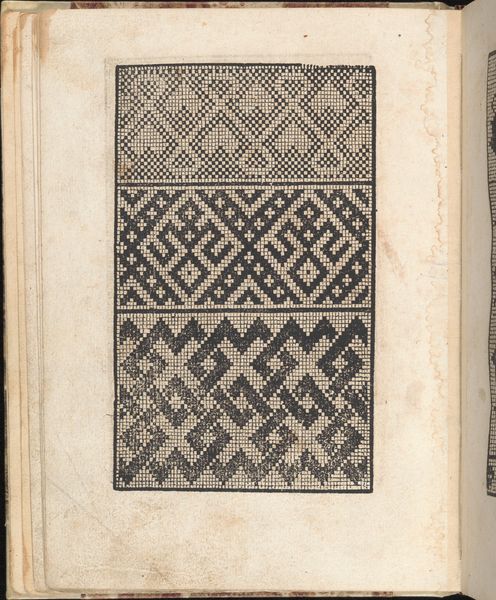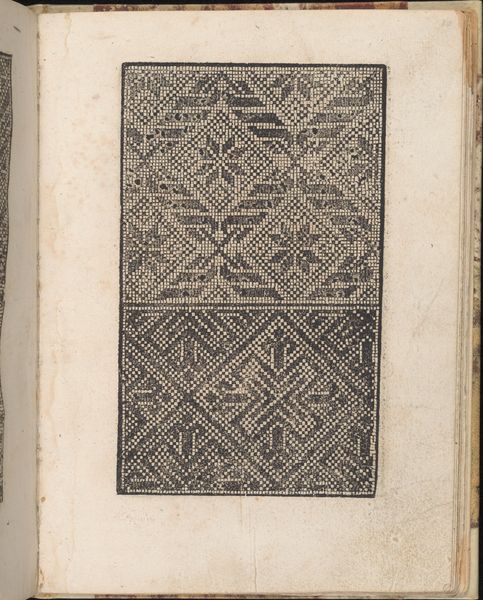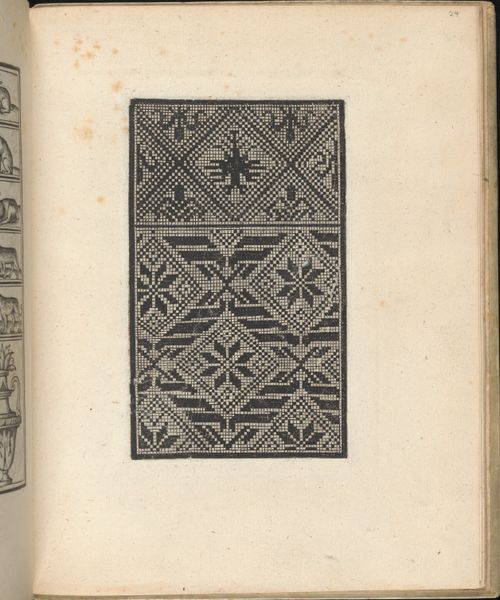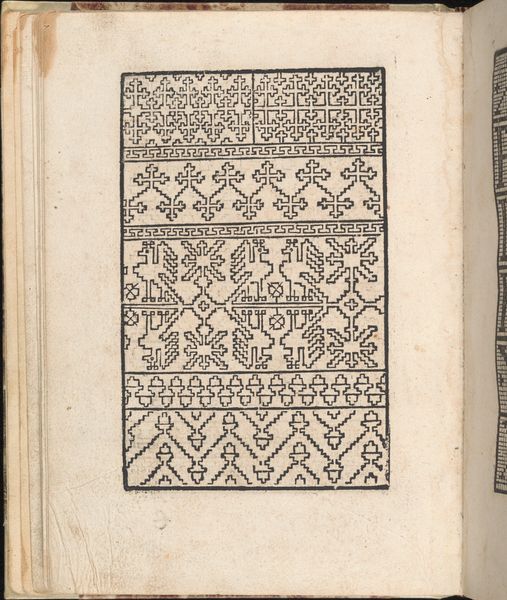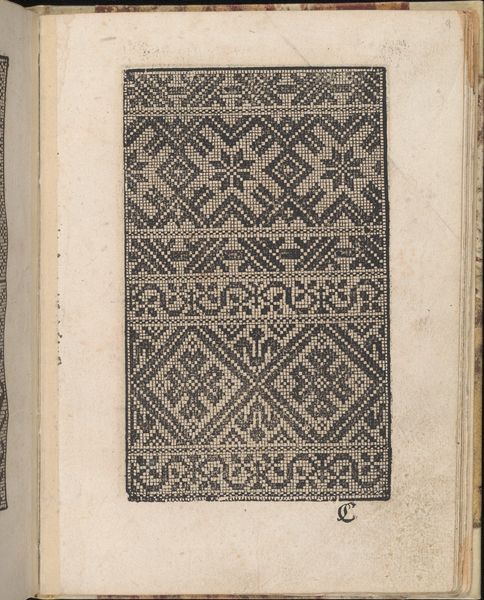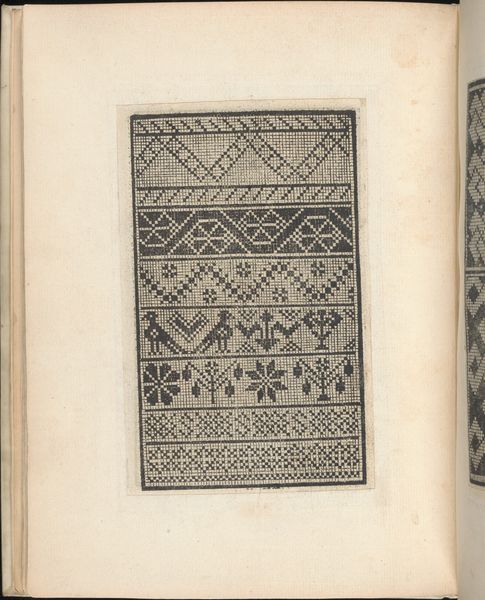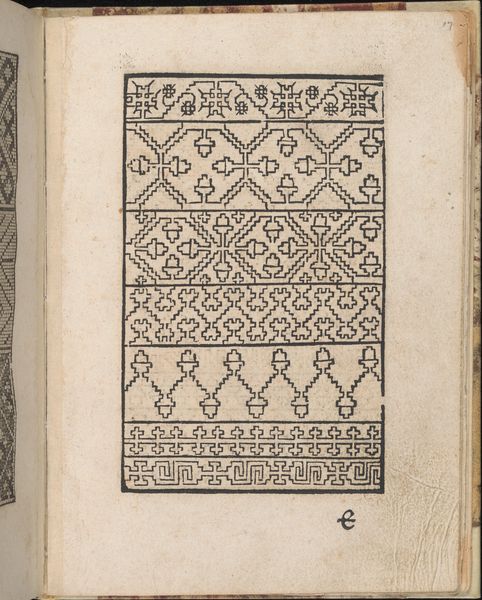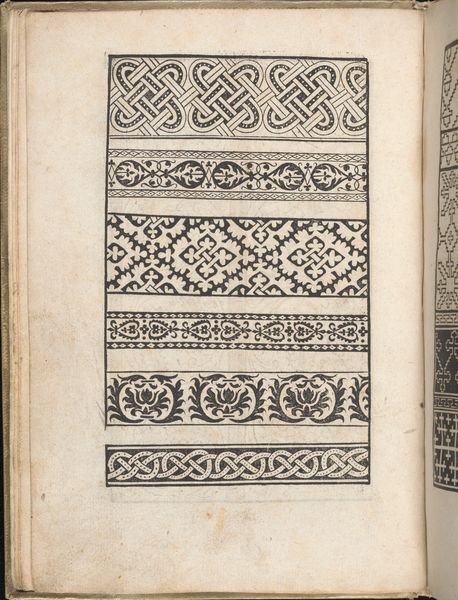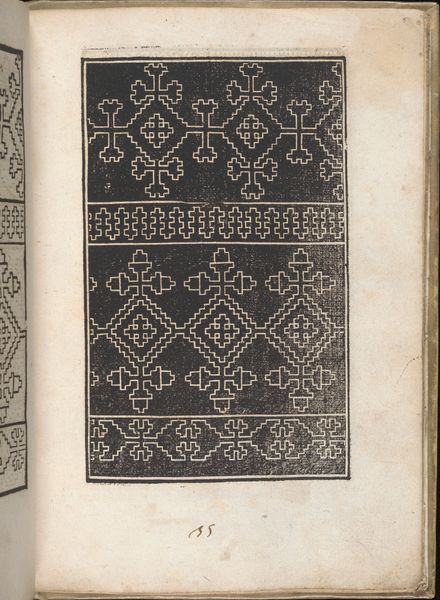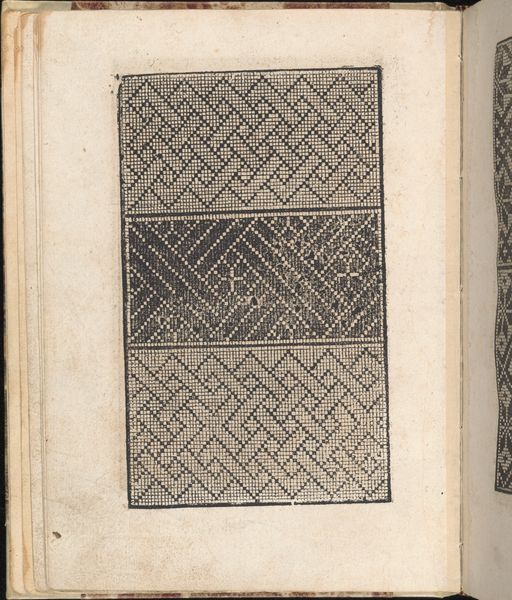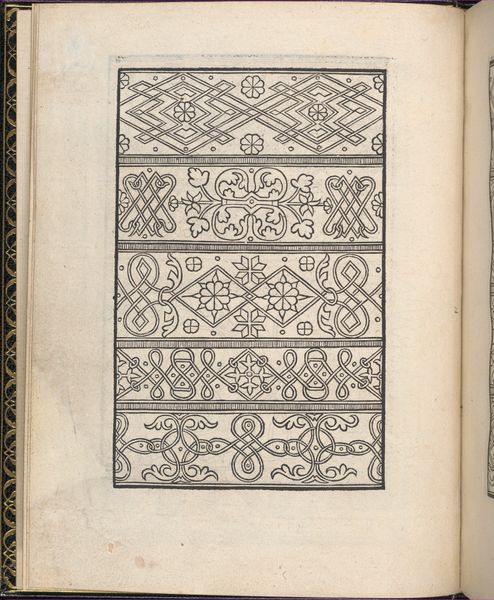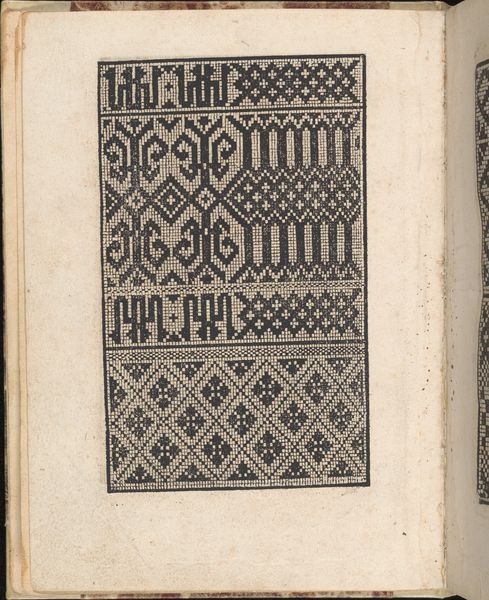
Ein new getruckt model Büchli...Page 14, recto 1529
0:00
0:00
print, woodcut
# print
#
geometric
#
woodcut
Dimensions: Overall: 7 7/8 x 6 1/8 in. (20 x 15.5 cm)
Copyright: Public Domain
Curator: This is a page from "Ein new getruckt model Büchli," created by Johann Schönsperger the Younger in 1529. This particular page showcases intricate geometric patterns rendered in woodcut, currently residing at the Metropolitan Museum of Art. Editor: Wow, it almost looks like an early form of digital pixel art, but handcrafted. The density of detail is mesmerizing. You can immediately sense its utility and its link to production—I’m thinking textiles, lace. Curator: Precisely. These pattern books were instrumental in the rise of textile and needlework industries. Think of them as instruction manuals and design catalogs rolled into one. They democratized access to complex designs. This access speaks directly to female economic agency during the renaissance. Editor: That’s fascinating. So, by providing these readily available models, were they changing the nature of craftwork itself, shifting it perhaps toward reproduction rather than pure innovation? The rise of these kinds of printed matter have huge impact in labour and manufacturing contexts, but there must be questions of ownership here, too. Curator: It is complex, yes. On the one hand, it standardizes certain aesthetics and potentially homogenizes some local traditions. On the other, it empowers women by providing them the means to generate income. Also, consider the social implication here: designs were now circulating beyond courtly spheres and impacting various classes and gender identities. Editor: Absolutely, seeing this printed page allows me to envision a bustling workshop. The repetitive nature of this medium surely was revolutionary in how labour, gender and social status, and production were all radically interlinked. One might see its implications echoing even today. Curator: I agree. This seemingly simple geometric design unlocks critical insight to broader movements of identity, access, and power within and surrounding this period. Editor: Indeed. From the intimate scale of the page to its mass-produced purpose, it holds immense social material for discussion, even five centuries later.
Comments
No comments
Be the first to comment and join the conversation on the ultimate creative platform.
